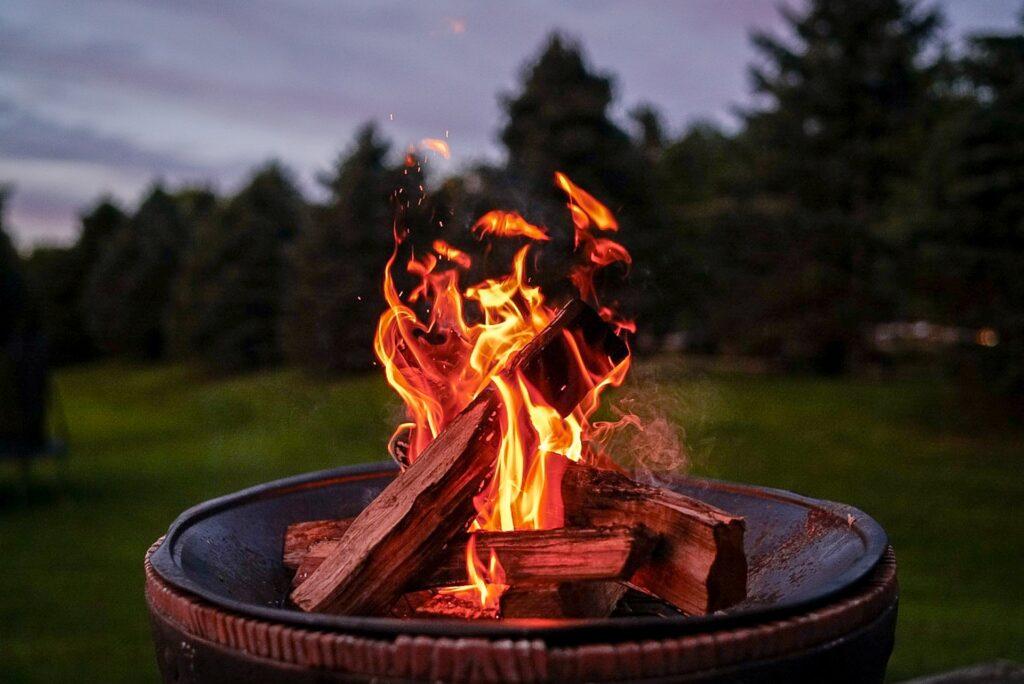Summary – Yes, outdoor area rugs can get wet when exposed to rain, snow, and dew or from mere condensation. But this shouldn’t be a problem if your rug is made of the best quality rug material for an outdoor area, such as Polypropylene, Polyester, or Nylon. These outdoor rugs are built to withstand moisture and all outdoor weather conditions.

If you’re like most people, you probably think of outdoor area rugs as being made of weather-resistant materials that can withstand getting wet. However, the truth is that not all outdoor area rugs are created equal.
Some are made of materials that can actually get wet easily. Others are designed to be used in areas where water tends to collect and stay on top of the rug.
Perhaps, like me, you also wish to design your outdoor space and want to know what would be the fate of your outdoor rug. In this article, I will teach you all you need to know about outdoor rugs and some cleaning and maintenance techniques that I have used on my rug to keep it in good shape.
Can Outdoor Rugs Get Wet?
Yes, outdoor area rugs can get wet. f placed in an uncovered area, they can easily be soaked by rain, snow, and dews, especially during the rainy season. However, even when placed in a covered area, outdoor rugs can still get wet from mere condensation and spills of water, beverages, and other liquids.
However, whether or not your rug is damaged or retains its quality after being wet depends on several factors, including the nature of your outdoor space, the material used to make the rug, how frequently or for how long your rug is exposed to water and excess moisture, and how well you care for the rug.
If your outdoor carpet or rug is made of the right outdoor rug material, you may leave it outside in the rain and allow it to become wet. Synthetic fibers are the ideal materials for outdoor rugs.
These materials are usually very flexible and resistant to UV rays, rain, mildew, and dust. As a result, they will not be easily damaged when exposed to sun, rain, spills, or mildew. But, to minimize mold growth, it is best to dry them off after rain and spills.
However, if your outdoor area rug is made of natural fibers such as jute or sisal, it can be easily destroyed when exposed to water for an extended period. Hence, it is advisable to roll up your rug and store it when not in use or during the rainy season.
Now, let’s look at the damage that might occur to your outdoor rug when it is consistently exposed to rain and mildew.

What Happens When An Outdoor Area Rug Gets Wet?
Even if your outdoor rug is made of synthetic material, prolonged exposure to moisture can harm it, especially if not properly cared for. Here are some of the consequences of moisture on your outdoor rug.
- Mold growth: Constant condensation of water on the surface of your rug can cause mold growth. And aside from the irritating appearance, molds can cause health problems.
- Discoloration: Constantly sipping water on your outdoor rug might cause it to lose its quality and original color.
- Bad Smell: Aside from mold growth and discoloration, a damp outdoor rug can stink up your house and outdoor space, making relaxation and entertainment uncomfortable.
Best Rug Materials for Outdoor Area
When choosing your rug, it is important to consider a material that can withstand excess moisture and water interaction, especially if the weather in your area is mostly wet. This way, you can leave your rug outside all year.
The primary material for many outdoor rugs is synthetic fiber. They include:
Polypropylene
This versatile synthetic material is widely used to manufacture several industrial and commercial items such as ropes, clothing, and carpets.
Polypropylene carpets are made of thermoplastic synthetic fabric that is extremely durable and resistant to water, mildew, and stains. They are also lightweight and cheap.
The rugs are also non-toxic and fashionable. They give elegance to your outdoor décor while also protecting your wooden and concrete floors.
They are also quite easy to clean, and their strength and color will not fade even after repeated soaking, cleaning, and drying.
Polypropylene rugs have a plush feel and provide cushioning for your feet.
Polyester
Polyester is another durable material for outdoor rugs. They are waterproof, allowing them to survive prolonged exposure to water and moisture. They also fade very little in the sun.
Polyester carpets have a soft touch and come in various colors and designs, making them a perfect complement to your outdoor decor.
However, they may be difficult to clean when stained with oil. So, if your floor is covered with a polyester rug, I propose that you keep oily meals away from your space.
Nylon
These are popular for being eco-friendly and waterproof, making it an excellent choice for outdoor area rugs. Nylon rugs are also great for high-traffic areas since they absorb stains and are easy to clean.
However, because nylon may become quite hot when exposed to sunshine, I recommend using it only in a shaded place.
Acrylic
Although a less common outdoor rug material, acrylic rugs have a smooth, warm, and rich touch. They are resistant to water and moisture and are not easily damaged by sunlight and oil stains.
Acrylic rugs are simple to maintain. But lower-grade acrylic carpets may pill and warp more quickly if regularly exposed to water and sunshine.
There are other types of outdoor rugs made of natural fiber. They include Sisal, Jute, Seagrass, Bamboo, and Hemp. While these materials create lovely outdoor décor, prolonged wetness can easily damage the rugs.
But if you desire to use a natural fiber rug in an outdoor setting, it would work best in a sheltered area.

How to Care For Outdoor Area Rugs
Outdoor area rugs are easily exposed to rain, sunlight, spills, foot traffic, and dirt. And regardless of the material of your outdoor rug, poor maintenance can make your outdoor space unusable.
Here’s how I propose caring for your outdoor rugs.
Regular Cleaning
The general rule is to clean your outdoor area rug at least once a month and at the beginning and end of the season. This is a good way to preserve its beauty and quality.
Consider the following cleaning tips:
- Vacuum your rug regularly to remove dirt and debris that adheres to the fiber and settles in its base.
- Perform deep cleaning regularly with the following materials: (Pressure washer, High-quality mild detergent, a long-handled brush designed specifically for rug cleaning, and a carpet dryer to keep water from soaking in)
- You may also hire a professional to clean your carpets.
- If there is a spill on the carpeting, whether it is water or beverage, clean and dry the wet spot right away.
- Typically, a baking soda and vinegar solution can be used to clean stained spots. However, avoid using a strong chemical.
- You may also ask the manufacturer about the best cleaning procedures for your specific rug material.
Store When Not In Use
After a pretty entertaining time outside, it is best to roll up your outdoor rug and keep it in a dry area, especially if it is made of natural fiber.
Also, keep your outdoor rug indoors during the rainy season to extend its life and reduce wear and tear.
Your outdoor rug may be simply stored in any of the following locations:
- Against a wall in an enclosed environment.
- In the garage or a shed.
- In a plastic bag.
Avoid Moisture
Mold can grow on your outdoor rug if it is damp for an extended period. Unfortunately, mold growth is not only unsightly but also unhealthy.
The following tips might assist in preventing mold growth on your outdoor rug:
- If your rug becomes wet, dry it well in the sun, ensuring that both sides are completely dry.
- Then, relocate it away from its original location to allow the floor to dry before returning the rug to its original location.
- Make sure that no water gets trapped beneath the rug.
- Also, hang your rug over a railing to dry in the sunlight when you clean it.
- If you don’t have a railing, lay the rug on the floor to sun-dry and, after a while, flip it over to enable both sides to dry thoroughly.
FAQs On Can Outdoor Area Rug Get Wet
Can I Place an Outdoor Rug on Unsealed Concrete?
Unsealed concrete floors can be porous, enabling moisture to be trapped by your rug. This can easily allow for mold growth, causing significant damage to your outdoor rug. As a result, it is best to set your outdoor rug on a sealed concrete or wooden floor for it to breathe and evaporate moisture.
Can I put An Indoor Rug Outside?
No, indoor rugs should not be used in an open-air area. Unlike synthetic outdoor rugs, meant to endure rain, sun, and mildew, indoor rugs will fade fast if left in the sun and be damaged if exposed to prolonged rain.

